Why are the continents called that?
Why was Europe called Europe?
There are several versions. Here is one of the most common.
At the place where the state of Lebanon is now located, Phenicia was located in ancient times. According to ancient greek myths, the god Zeus fell in love with an insanely beautiful earthly woman named Europa. Historians suggest that the word "Europe" in Phoenician meant "entry" (the word itself is most likely Assyrian).
If Mauritius sits on top of a mascon, it is most likely the result of movement crust, due to which the existing land base collapses and completely sinks. The island then rose to mark the burial site of the lost earth like a giant headstone. This theory was formally put forward by geologist Lewis Ashwal of the University of the Witwatersrand in Johannesburg.
Mauritius - only eight million years old - is childhood on a geological scale, which means that its general geology should be just as young. However, 2 billion samples of mineral zircon have been collected on the beaches of the island. Ashwal and his colleagues collected more samples and used uranium-lead dating methods that rely on the concentration of two elements in zircon before they determined its age and found that the samples were even older - about three billion years old. Zircon could not have formed alongside much younger Mauritius, instead it likely exploded on land when submarine volcanoes, much older rocks from the subsurface crust, erupted.
Beauty Europa was the daughter of Agenor, king of Phenicia. Thunderer Zeus wished to make Europe his wife, but King Agenor would not allow this. Zeus had no choice but to kidnap the beauty.
Turning into a white bull, Zeus stole Europa and transported her to the island of Crete. Later, according to some myths, Europe became the wife of the Cretan king. Therefore, the inhabitants of Crete began to call their land Europe. 
"The Rape of Europe", V. Serov, 1910
Now Ashwal and his colleagues conclude that there was once a great specimen of land between India and Madagascar, part of the ancient supercontinent of Gondwanaland. About 200 million years ago, when Gondwanaland broke apart, this piece of common land land broke apart in ribbons and sank under water. The compressed, sunken earth created massive concentrations, subsequent volcanoes created Mauritius, and even later eruptions laid siege to the control zircon.
“Our findings confirm the existence of a continental crust beneath Mauritius,” the researchers say bluntly. This continent may disappear forever, but tiny pieces of zircon will remain to tell its story. How does fossil evidence support the theory of continental drift?
In the 5th century BC, the name Europe spread to all of Greece. Gradually, gaining new knowledge about the world around them and traveling more and more, the ancient people pushed back the borders of Europe. And only in the middle of the 18th century, the final borders of Europe were established, which are also marked on modern geographical maps.
Perhaps this was the case, and Europe was named Europe in honor of the heroine of ancient Greek myths. In any case, this is a very interesting and curious version.
Scientists have found fossils of many identical species on widely divided continents. For this, they had two theories. First, they suggested that individual species evolve in the same way across vast continents, which is unlikely. The second theory was that the continents were in contact with each other millions of years ago and somehow drifted away from each other.
For example, fossils found in South America have been associated with those in Australia and Antarctica. These lands were in contact sometime in the past, allowing species to roam freely, die, be buried and petrified on these continents. The fossil remains in the rock layers of continents drifting from land, resulting in widely divided but nearly identical fossils.
Why was Asia called Asia? 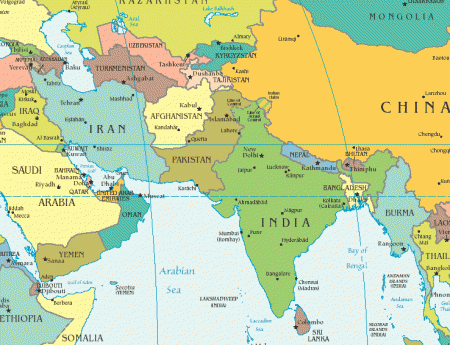
The name "Asia" as applied to the continent also appeared thanks to the ancient Greeks and their myths. However, the word "asia" itself is Assyrian, translated as "sunrise". Now it is clear why the largest part of the world was called Asia, because it is there that the sun rises.
When did scientists define the puzzle on the continents?
Who discovered the spread of the seabed
Harry Hess, an American geologist and professor of geology at Princeton University, discovered the spread of the seabed. Based on material lifted from the ocean floor during a drilling project, he determined that the rocks on the ocean floor were younger than those on continental land. Hess theorized that the seabed spreads when magma erupts from the interior of the Earth along the oceanic ridges of the oceans.What magnetic evidence did scientists use to test the spread of the seabed?
The newly created seabed slowly spreads from the ridges and then sinks back into the depths the globe around deep water trenches. When molten lava is forced out of the mid-ocean ridges, it cools, creating a new ocean floor. And as the rock cools, special minerals with magnetic properties line up with the Earth's predominant magnetic field. This keeps a record of the orientation of the magnetic field at that particular point in time. Changes in the magnetic fields of the magnetic fields of rocks, called magnetic anomalies, happen when the earth's field changes or when the north and south magnetic poles change places, usually over hundreds of thousands of years.
The word "asia" among the Assyrians was just a word, but the name of the part of the world it became all the same thanks to the Greeks. In ancient Greek mythology, there is a titan god named Ocean. Asia (Asia) - his daughter Oceanida, whom the Greeks themselves portrayed riding a camel. She carried a shield and a box with fragrant spices in her hands. In some versions of the myths, Asia is the mother (and in some - the wife) of Prometheus himself - the very hero who brought fire to people 
G. Dore "Oceanides", 1860
Scientists still don't know what is causing these magnetic reversals, but it may have something to do with the giant convection currents inside the Earth. The theory of seabed propagation has been validated by measuring such magnetic anomalies in rocks on the ocean floor. Scientists have discovered a symmetrical striped pattern of magnetic anomalies on the ocean floor spreading on either side of the Mid Atlantic Ridge. This ridge is a long volcanic mountain range that descends on the seabed Atlantic Ocean between the continents of North America, Europe, Africa and South America.
Everything, that east of Europe and closer to the place where the sun rises, the ancient Greeks began to call Asia. The Scythians who lived across the Caspian Sea were called the Asians by the Greeks. And the ancient Romans, by the way, called the inhabitants of their eastern province Asians.
When the period of the greats began geographical discoveries, it was decided to use the word "Asia" to denote the vast land areas located closer to sunrise (that is, to the east). Thus, we owe the appearance on the map of a part of the world called Asia to the Assyrians and the ancient Greeks.
The structure and distribution of these bands showed that magnetic fields changed repeatedly over millions of years and could only have formed if the seabed spread over those millions of years. We can only speculate about what Mauritania might have looked like because it is probably between three and six miles under the sea.
Great Northern Expeditions
The lost continent of Mauritania probably encompassed most of Indian Ocean before it was torn apart by indomitable geological forces and plunged into the sea. It can now be found in a nice chunk. So far, they have discovered something unexpected. The rocks were embedded with ancient crystals dating back to three billion years - 300 times older than the island's young volcanic surfaces. The rocks of this old originate from the continents of the Earth, but there are no continents around Mauritius.
Did the ancient Greek mythology influence the name of any other part of the world? Yes! And this part of the world is Antarctica.
How did Antarctica get its name? 
Antarctica is a derivative of the word "Antarctica". The southern polar region was named Antarctica. Translated from Greek, Antarctica means "opposite to the Arctic", because the name "Arctic" appeared earlier as a designation of the area adjacent to the North Pole. It is the word "Arctic" that is directly related to ancient Greek mythology.
How did the continents get their names?
This exciting and unexpected result can only mean that there is a chunk of an ancient continent beneath the young volcanoes of Mauritius, says lead study author Lewis Ashwal, who studies geophysics at the University of the Witwatersrand in Johannesburg, South Africa.
The idea that a massive slab of missing land could lie beneath Mauritius was first proposed by Ashwal in Among the island's sandy beaches, Ashwal and his team discovered tiny zircon crystals that were nearly 2 billion years old, raising suspicions about the wrong, mythical continent. But detractors argued that microscopic crystals could travel to the beach by any means - no matter how unlikely - and it was simply impossible to prove that these alternatives were wrong.
Thunderer Zeus fell in love with the nymph Callisto, but the envious gods could not see how happy Zeus and Callisto were and turned a pregnant woman into a bear. After that, she gave birth to a son. Arkad, that was the name of his son (in Greek, bear - arktos), grew up without a mother. Once, while hunting, he swung a spear at his mother the bear Callisto (of course, he did not know who she was). Seeing this, Zeus turned both creatures dear to himself into constellations - this is how the Ursa Major and Ursa Minor appeared.
Perhaps the original crystal from Africa, located in bird feathers and, for example, fell to the ground. There were many skeptics in the scientific community who criticized our proposal because they felt that zircons were on sandy beach can be carried there by winds, ocean currents or birds, or car tires, or people's shoes, says Ashwal.
But after finding ancient zircon crystals implanted in the rock of the island, Ashwal confidently put these skepticists to rest. The island of Mauritius is covered in volcanic rocks, which is quite young at the age of nine million years. It's strange that much older zircon crystals are embedded in this young rock, but Ashwal has an idea of how they got there. Nine million years ago, when volcanic magma emerged from Earth's mantle, it passed through a buried, lost continent before surfacing and spewing lava everywhere, Ashwal explains.
These constellations helped to find the pole star, always pointing north. Therefore, the ancient Greeks began to call the entire northern region the Arctic. Then the name Antarctica appeared (the opposite of the Arctic). Well, later the word Antarctica appeared - the sixth part of the world, southern mainland at the very pole of the Earth. 
This part of the world was discovered by Russian sailors under the command of Thaddeus Bellingshausen on January 28, 1820. True, this is the official date - it was then that the sailors saw the "ice continent". A year later, the sailors saw the coast and named this area the Land of Alexander the First. However, this name did not spread to the entire continent, which eventually received the name Antarctica, associated with ancient Greece.
The zircon crystals, too hard to melt, just tightened up. Since then, they have sat on the surface, patiently waiting to tell the secret of the scientists of Mauritius. Beneath Mauritius, there may be remnants of the lost mainland of Mauritania, believed to have been a long, thin continent measuring 350 square miles.
Ashwal points to the supercontinent Gondwana, which once spanned Africa, India, Madagascar, Australia, and Antarctica. It began to rip apart 200 million years ago, just as Somalia, Ethiopia, Kenya and Tanzania split from Africa today to form the East African Rift Valley, which may one day be filled with ocean.
So, the three parts of the world - Europe, Asia and Antarctica - got their names from ancient Greek myths. But how did the names of other parts of the world and continents come about?
Even children know that America was discovered by Christopher Columbus. Then why was this part of the world not called Colombia or Columbica? And what is the general origin of the name America?
But when Gondwana disintegrated, sending our familiar continents to their current locations, the disintegration may not have been as clean. “Our work shows that continental decay is more complex and messy than previously thought, and could lead to continental fragments of varying sizes littering the ocean floor,” explains Ashwal. For all its glory as a former continent, Mauritius could be considered a massive chunk of continental litter.
Discovery and exploration of Antarctica
Not all remnants of this disordered decay have disappeared. Before its tragic sinking, Mauritania may have once been associated with Madagascar. Ashwal compared ancient zircons found in Mauritius to centuries in other places such as India and Africa, and he found the "best match" in Madagascar.
Christopher Columbus, of course, discovered America, but at the same time he himself did not know that he had discovered a new part of the world, believing that the land on the other side of the Atlantic is China (Cathay, as it was called in the time of Columbus). ![]()
Columbus still became famous for centuries. But much less often talk about the Florentine navigator Amerigo Vespucci, who lived at the same time as Columbus, but was younger than him. Amerigo made four trips to western shores Atlantic Ocean, but two of them are considered by historians to be nothing more than a hoax. However, at least one trip was in fact - Amerigo made it in 1501-1502 to the shores of Brazil.
Anytime someone claims to have discovered a long-lost land, it is prudent to raise a skeptical eyebrow. But in this case, there is no doubt about it. I'm totally convinced, ”says Calvin Miller, a geoscience student at Vanderbilt University who was not involved in the study. Miller says the deep ages of zircon crystals surely imply that they descended from a bona fide continental crust. He, however, warns against how crystals can penetrate such a young rock.
Ashwal's notion that molten rock carries crystals through an ancient crust is "not quite iron," Miller says. "But that would be my favorite interpretation." It is also unclear what part of the lost mainland lies on the island of Mauritius. “They found ancient crystals surrounded by younger rocks,” explains John Valley, who studies geophysics at the University of Wisconsin-Madison but was not involved in the recent study. But they have not yet found any of the older rocks. "While the crystals provide valuable evidence for the existence of this submerged land, how far it lies is a mystery."
Upon his return, Amerigo Vespucci began to colorfully describe the course of the trip and his impressions, sending these notes in letters to his friends and the banker Lorenzo Medici. After some time, Vespucci's letters were published and had a tremendous success with readers.
Vespucci himself suggested calling the land he discovered the New World, but in 1507, a Lorraine cartographer named Martin Waldseemüller decided to put on the map new land and to name it after the "discoverer" - Amerigo Vespucci. Indeed, reading the notes of Amerigo, many came to the conclusion that Vespucci discovered some new continent that has nothing to do with China, discovered by Columbus on the other side of the Atlantic.
It could be a massive buried continent or just trace amounts of zircon crystals, says Dolina. No matter how much land lies three to six miles beneath the island, Ashwal thinks that most of Mauritania is strewn across the Indian Ocean floor, thrown into other shoals, ridges and banks. But at least we know it's there.
Discovery and exploration of Australia and Oceania
“It's not every day that a new piece of the continent is discovered, even though it's buried and we can't see it or touch it,” Ashwal says. For geosciences, Alfred Wegener is something like Galileo Galilei for astronomy or Charles Darwin for biology. Because his idea of continental drift was at the beginning of the last century a model of plate tectonics, which revolutionized geology and geophysics in the seventies. "Continents are mobile" - this understanding allowed us to understand the planet Earth as a very complex system.
However, not much time passed, and the geographers-cartographers concluded that both Columbus and Vespucci discovered the same continent. The cartographers left the name "America" for him, dividing it into North and South. 
Thus, already in 1538, North America and South America appeared on the maps. However, until the end of the 17th century, that is, another two and a half centuries, these lands in Europe continued to be called the New World. But, as we know, the name America was officially recognized.
Stefan Zweig called this whole story a comedy of mistakes, and A. Humboldt dubbed the very name of this part of the world "a monument of human injustice." It is not for nothing that they say that Columbus was lucky alternately: “he went to discover one thing, found another, but what he found was given the name of the third”.
Why is Australia called Australia? 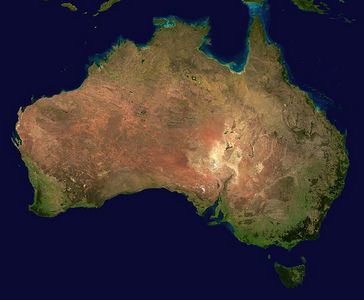
Australia - the fifth continent - was discovered in the early 17th century by the Dutch sailor Willem Janszon. Since then, this part of the world has appeared on geographical maps, but under the name New Holland. However, the boundaries of the continent were unknown at that time. How did Australia change its name, ceasing to be just New Holland?
The answer must be sought in the mists of time. Australia was talked about long before it was discovered. Even the great Ptolemy was sure that in southern hemisphere there is a huge continent, which must "balance" the planet. For the mysterious land, which either exists or does not exist, the conventional name Terra Australis Incognita was fixed, which translated from Latin means “Mysterious (or Unknown) Southern land».
The British in the 18-19 centuries were actively looking for the Mysterious South Land or New Holland. And finally, James Cook and Matthew Flinders, having made several voyages, contributed to the fact that the shores of the fifth continent appeared on the maps.
Flinders circled the mainland first. He wrote that he was bound by the name Terra Australis (South Land), but with great pleasure he would have called the continent differently - Australia. So, with the light hand of Flinders, this continent began to be called Australia, because the option proposed by the navigator seemed to the learned cartographers and geographers very, very successful. 
Matthew Flinders, author of the famous Journey to Terra Australis
Australia got its name thanks to the ancient thinkers and navigator Flinders.
Why is Africa called Africa?
There is no exact and only accepted answer to this question. There are many theories, each of which has the right to exist. Here are just a few.
How the name "Africa" appeared: the first version.
The name "Africa" was invented by the Greco-Romans. Territory North Africa to the west of Egypt, the ancient Greeks and Romans for a long time called Libya, because there lived tribes, which the Romans called "Livs". Everything that was located south of Libya was called Ethiopia.
In 146 BC, Rome defeated Carthage. On the territory captured as a result of the war, in which Tunisia is now located, a colony was founded. This colony was given the name "Africa", as local warlike tribes of Afariks lived in these places. 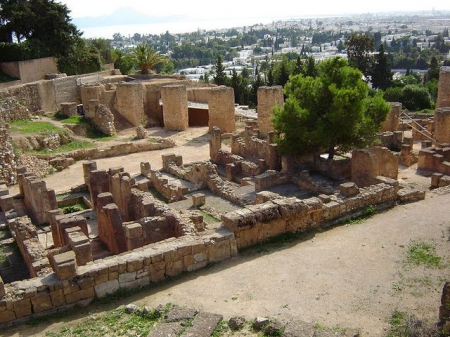
According to another theory, the inhabitants of Carthage themselves called people who do not live in cities, the word "afri", which is supposedly produced from the Phoenician afar (dust). The Romans, having defeated Carthage, used the word "afri" to name the colony. Gradually, all other lands of this continent began to be called Africa.
How did the name "Africa" appear: version two. 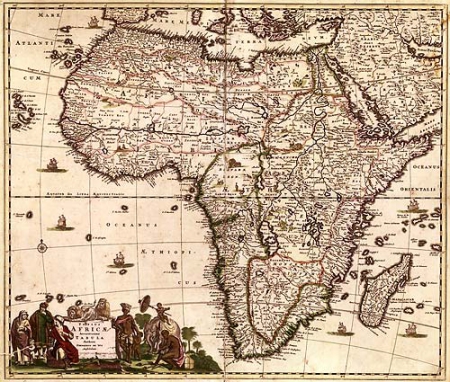
The name "Africa" was invented by the Arabs. Arab geographers have long known that Asia and Africa are separated from each other by the Red Sea. The Arabic word “faraka” is translated as “to separate”, “to separate one from the other”.
From the word farak, the Arabs formed the word "Ifrikia" - that is how they called the fourth continent (the ancient name can be translated as "Separated").
The famous Arab scholar of the 16th century Muhammad al-Wazan wrote about this. Later, Ifrikia turned into Africa, which was due to the peculiarities of borrowing foreign names in different languages.
pochemuka.ru
The question of who discovered Eurasia sooner or later arises before every lover of history and geography. After all, everyone has heard the wonderful stories about Columbus, Vasco da Gama and the numerous conquistadors who conquered the vastness of North and South America. However, with Eurasia, everything is not so simple, because there was no single traveler who owned the laurels of the discoverer of the largest continent on the planet. Therefore, it will be problematic to name the one who discovered Eurasia. The name of this person is unknown.
It would be more correct to focus on the main stages of the research and description of the features. geographic location the mainland and people who took part in numerous expeditions, the purpose of which was to explore the surrounding world.
Who was the first to discover Eurasia. The first people on the continent
The human species passed all the main stages of evolution in Africa and, only fully formed, began expansion to the neighboring continent. Until recently, Africa and Eurasia were connected by the relatively wide Isthmus of Suez, and only in the XlX century. it was torn apart by an artificial shipping channel.
It was along this isthmus and the Red Sea, which was very shallow at that time, that the first Homo sapiens crossed to the Middle East, settling on the Arabian Peninsula. Such a significant event happened, according to some estimates, about 70,000 years ago.
According to the theory widespread among modern scientists, people, leaving Africa, slowly moved east along the coasts in search of new sources of food, which they served as shellfish that lived in shallow waters. This path was long and difficult and took about 25,000 years, and of course, the route was not so direct - numerous groups fought back and went deep into the continent. Thus, those who discovered the continent of Eurasia were the first people who left the African continent, but it will take many millennia for mankind to comprehend its place in the world.
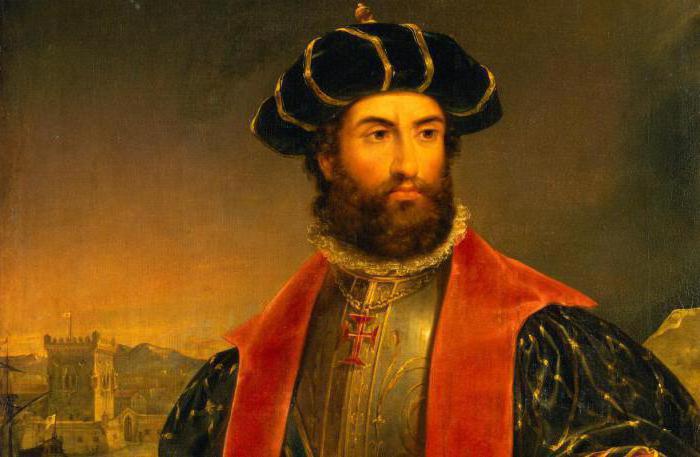
Who discovered Eurasia and in what year. The appearance of the term
Europeans are accustomed to believe that the primacy in geographical discoveries belongs unconditionally to them. And although the contribution of European navigators, traders and travelers is really great, one should not discount the Asian researchers who also contributed to the study of the geography of the continent.
However, the name of the mainland was still given by the Europeans. For a long time, after the outlines of the continent were more defined, a variety of terms were used in the scientific literature to name the largest continent on Earth.
For example, Alexander Humboldt, the great German scientist, one of whose specializations was geography, used the name Asia for the entire continent, without dividing it into parts of the world. But his Austrian colleague Eduard Suess in the 1880s already added the prefix "euro" and thus formed the name Eurasia, which quickly entered scientific use.
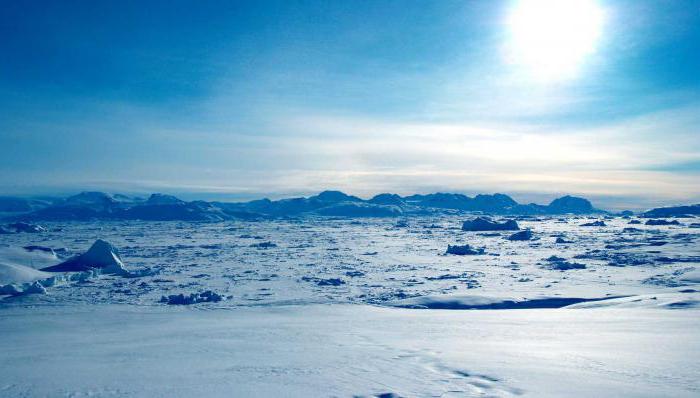
Great Northern Expeditions
If southern shores Eurasia was mastered by mankind for many tens of thousands of years, then the northern outskirts of the continent remained unexplored for a long time, as this was hampered by the harsh climatic conditions.
First of all, the powers that had access to the North Atlantic and especially Russian empire, the borders of which passed through unexplored and undescribed lands. The Russians began to move north in the XVl century, but they reached Kamchatka only in the XVII century.
The first Russian subjects who came to the Kamchatka Peninsula, from the detachment of the great Russian explorer and discoverer of the north-east of Siberia. This, however, was a land expedition.

Bering Strait
For a long time, researchers were occupied with the question of the existence of a bridge between Eurasia and North America but it was not so easy to answer it. Answering the question of who discovered Eurasia, one cannot avoid mentioning the name of the famous Danish navigator and Russian citizen Vitus Bering, who made a huge contribution to the exploration of the shores of the northeastern part of the Eurasian continent.
The first naval expedition, the purpose of which was to discover the strait or to prove its absence, took place in 1724, when, on the personal order of Peter I, Bering set off on a voyage, as a result of which he sailed into the Chukchi Sea without encountering obstacles and without seeing the American coast. Thus, it was proved that the two continents are separated by a strait, which was named after its discoverer.
The success of the first Kamchatka expedition inspired the researchers to organize a series of campaigns that went down in history as the Great Northern Expedition. Each of these trips brought more and more information about the coast of the Arctic Ocean, and the outlines of the continent became clearer and clearer, as if floating out of the sea haze.
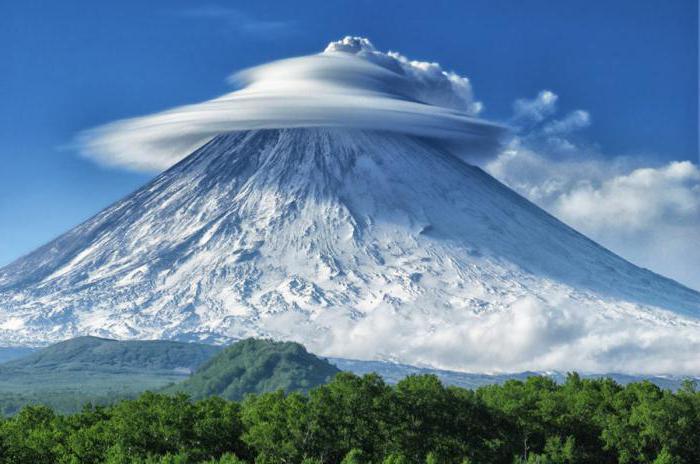
Colonization and international cooperation
Talking about who first discovered and explored Eurasia, one cannot name one name, but one can recall the numerous travelers who contributed to the exploration of unknown lands and cartography.
At the turn of the 15th-15th centuries, the leaders in the study of overseas lands were the Portuguese, but they were in no hurry to share their knowledge, rightly fearing competition. However, the competitors' curiosity was so great that no obstacles could stop the spies of neighboring states from penetrating the holy of holies of Portuguese cartography - the Indian House, the place where information about the newly discovered lands was kept.
It was as a result of a special espionage operation, planned by order of Duke Ercole l d'Este, that the famous map that went down in history as the Planisphere Cantino was stolen from this vault. On this map you can see the world as it appeared to the Portuguese in the 15th century. the coast of Brazil and a narrow strip of the southern and southeast coasts Eurasia.
Great explorers
Today we can confidently say that such researchers as Vasco da Gama, who reached the shores of India, and Willem Barents, who stubbornly searched for the northern route to the East Indies, made a special contribution to the study of Eurasia, but discovered and explored the Arctic.
The era of the great geographical discoveries stretched for more than two centuries and included the research of Spanish and Portuguese navigators who were looking for new ways to India, as well as the campaigns of Russian Cossacks to Siberia and to the coast The Pacific... Therefore, answering the question of who discovered and explored Eurasia, one can name the following names: Bering, Vasco da Gama, Timofey Ermak, as well as the names of many other wonderful people.




